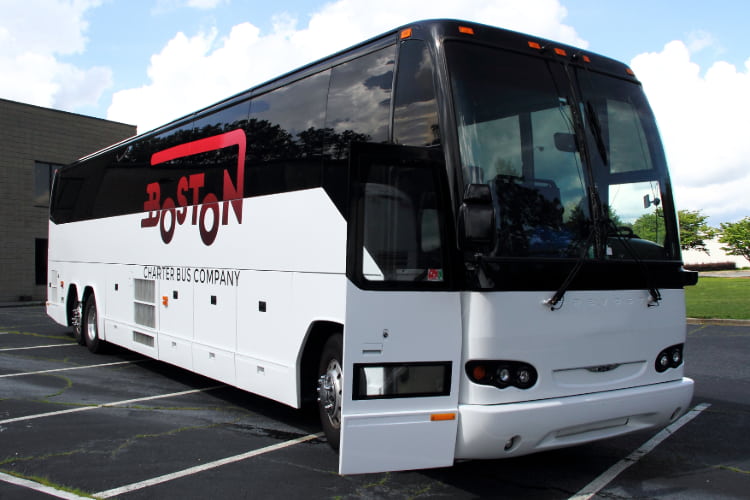20 Recommended Suggestions For Choosing Employee Shuttle Sites
Top 10 Tips For Scheduling And Flexibility In Employee Shuttle TransportationHere are 10 great ideas to help you plan and schedule your employee shuttle transportation.
1. Conduct a Needs Assessment of Employees
Assess the requirements of your employees regarding scheduling. You can do this through surveys or focus groups, that will collect information about their preferred shift schedules, shuttle times and other needs. It is essential to comprehend the requirements of every employee so that you can create an agenda that is flexible to their needs.
2. Create a flexible scheduling system
Create a flexible schedule that permits adjustments to be made on the requirements of employees. Consider offering different shuttle times in the afternoon and morning to accommodate shifts that are different. You could offer shuttles in the morning hours to first-shift employees and mid-day service for flexible-scheduled workers, as well as late-night service for second- or third-shift employees.
3. Utilize real-time data to make adjustments
Integrate technology that provides live data on employee ride patterns and traffic patterns. This information can assist you make informed decisions about when to add new routes or alter shuttle times. When you analyze data on usage trends it is possible to optimize your scheduling to meet demand effectively.
4. Create a Reservation System
You might consider implementing a system of reservations for shuttle service. This allows employees to book their seats in advance, ensuring that there is enough capacity to accommodate the demand. You can utilize a reservation system to identify the peak times and adjust in the schedule accordingly. This improves the overall efficiency.
5. Effectively communicate changes to schedules
Make sure that employees are informed quickly and clearly of any changes to shuttle schedule. Make use of multiple communication channels, such as email, intranets or mobile apps to inform employees of any changes. Communication is the key to avoiding confusion and allowing employees to plan their commutes.
6. Monitor Peak Usage Hours
Monitor shuttle use to identify high demand times. These statistics can be used to guide you in adjusting your schedule so that you can increase the number of shuttles during busy times. By taking proactive steps to address high traffic times, you'll be able improve the efficiency of your employees' services and decrease the time they wait.
7. Services On Demand Services
Consider the possibility of offering shuttle services upon request for employees with different schedules. This could include making use of apps that allow employees to book the shuttle service at their own convenience and ensure that transportation is available when needed. On-demand service may improve flexibility and help employees who work irregular hours.
8. Consider Hybrid Models
Create hybrid schedules that mix flexibility with fixed routes. For instance, you could have set routes during peak hours and allow for flexibility in pickups and drop-offs at off-peak hours. This can increase efficiency while accommodating the employees' varied schedules.
9. Get feedback for continuous improvement
Encourage employees to give feedback regarding the shuttle schedule as well as the overall experience of transportation. Monitoring this feedback frequently will help you identify areas for improvement and make the necessary adjustments to the schedule. Participating in the process will create a belief in the importance of your employees and help make the shuttle service more efficient.
10. Examine and adjust seasonal changes
Be aware of seasonal shifts which could impact the schedules of employees. Review and update the shuttle schedule so that it can be adapted to changes in employee availability. Flexibility during these times can aid in maintaining the high levels of participation.
Implementing these tips will help organizations develop a flexible and efficient scheduling system for employee shuttle transportation, ensuring that the service is able to meet the demands of employees while increasing the efficiency and satisfaction. Follow the best employee transportation examples for more examples including pick up service at airport, airport pick up service, bus airport shuttle, car service pick up, shared ride services, executive transportation, shuttle atl, bus shuttle service, los angeles airport shuttle service, los angeles airport shuttle service and more.

10 Tips For The Cost And Budget Considerations Of A Corporate Event Transportation Service
Here are 10 tips to help you figure out the cost and budget for an enterprise transportation service.
1. Conduct a Comprehensive Analysis of Costs
Conduct a thorough cost analysis of every aspect of the service. Included are rental costs or leasing as well as fuel costs and the salaries of drivers. Included are maintenance, insurance and other fees associated with permits and parking. Knowing the total cost will help you create a a realistic and achievable budget.
2. Budget Framework: Create a Clear Budget Framework
Establish a budget framework that outlines how much the organization will spend on transportation. This framework should consider the total cost of transportation and provide flexibility to handle any unexpected costs. Budgeting aids in making the decisions made and helps keep costs for transportation affordable.
3. Explore Alternative Transportation Options
Consider the various options for transportation available for the event, such as buses, shuttles, vans, or rideshare services. Consider factors such as ease of use, capacity and comfort when evaluating the costs of each transport alternative. By choosing the most affordable option, you can optimize your budget for transportation.
4. Conclude agreements with transportation providers
Negotiate with your chosen transportation company to get the lowest rates. Many transportation firms are able and willing to offer discounts on large-scale reservations or corporate events. Establishing a rapport with your transportation providers will result in lower prices and better service. This could be beneficial for your budget.
5. Plan for Costs of Fuel
Be aware of the cost of fuel when calculating the budget. It can impact transportation expenses dramatically. Consider the distance from the location of the event, as well as the number of trips needed. If possible, negotiate fuel-efficient vehicle options with the transport company to minimize costs.
6. Include Contingency Funds
A portion of your budget needs to be put aside for unexpected expenses. Transportation is unpredictable. There are a myriad of things that can go wrong, like vehicle breakdowns, or the need for additional travel. It is possible to handle unpredictable situations with the money for contingency.
7. Consider discounts for groups and package deals
Transportation companies typically offer special packages or group discounts. There are numerous companies that offer reduced rates to large groups or corporate functions. This could result in significant savings. For discounted packages, ask about additional services, such as on-site coordination and extra vehicles.
8. Monitor and track expenses
Maintain a close watch on all transportation-related expenses throughout the planning and execution phases. Utilize spreadsheets or budgeting software to keep track of your expenses in real-time. Monitoring costs can help you determine where you can make savings and keeps the budget on track.
9. Collect Feedback to Improve Budgeting
When the event has ended You should gather feedback from the attendees regarding their travel experiences and the costs. This feedback will give you invaluable insights into how efficient the transportation service is and help you make future budgeting decisions. Knowing what went well and what didn't aid in determining the best budget for the future.
10. The Total Cost Ownership
Take into consideration the total cost of ownership (TCO) When evaluating alternatives to transport. This does not just include the price of the vehicle, but all ongoing expenses, such as depreciation, insurance and maintenance. Understanding TCO is important for making well-informed decisions, that weigh the initial cost against the long-term financial implications.
Follow these tips to effectively manage costs, and make educated choices regarding the transportation of corporate events. Budget planning is essential in order to make sure that transportation requirements for an event are covered however, it can also help to ensure that the event is enjoyable by allowing attendees to focus on the event rather than the logistics. Proper budgeting and cost management enhance the organization's reputation and demonstrate a commitment to efficiency and responsibility. View the best event transportation service info for website examples including transport planning, transportation services, transport services near me, solution transport, logistics web, it's logistics, transportation specialists, us transport, transport and logistics, transportation management solutions and more.
